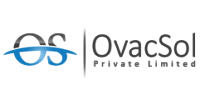How to Choose the Best HRMS for Your Business
Amidst today’s tough economic and business competition, it is important to adopt human resource management practices that enable the realization of employee potential and business expansion. Automation of HR`s various functions such as HR Audits, Management, Employee Relations, and Compliance is offered through HR Management Systems (HRMS). However, out of the vast number of available HRMS worldwide, it can be very complex to choose the right one.
The emphasis in this guide is on core areas of the HRMS that one must take into account while making selections pertaining to the HRMS so that they do not regret their decision later. The guide also provides an overview of the features of HRMS, the benefits one can expect from such systems and the techniques of how to implement them in business.
What is an HRMS?
A HRMS is an integrated software portfolio used to plan, organize, control, and evaluate an organization’s human resources applications, such as payroll systems, hiring, employee benefits programs, attendance systems, and performance appraisal systems. To facilitate and improve business efficiencies, cut administrative activities, and enhance data quality and compliance, an HRMS can interoperate with other platforms and applications.
Key Features to Look for in an HRMS TOOLS
As an organization grows, an HRMS is one of the features that are a must-have. Customization through these particular features is crucial. Some of the features are highlighted below:

Tips for selecting the best HRMS for your business.
Personnel Record Management
All HRMS systems should provide users with capabilities to save, handle as well as secure Data related to employees. This less intricate information consists of data such as: employee contacts, data related to job positions and performance records among many others and even the more sensitive and intricate information such as employee wages and tax.
Payroll Structures
Any company’s payroll is taxical in that it engages most of manpower and resources. It is through the implementation of a proper HRMS that the tracking of payroll can be made easy, employment and income related taxes, automatic cuts & deductions together with the exact salaries can be managed effectively. Multiple and integrated payment frequencies such as weekly, Ross which can be a multi-functional system resonant with your business model will further add advantages.
Job Placement, Ads Creation and Applicant’s Management
One of the most critical functions for any business is acquiring new talent. Role and people matching expertise is what iveness at ahlms recruitment module can actually offer which allows posting job positions, manage unsorted applicants, schedule interviews when its finally possible while chugging on the recruitment process at various stages. This feature reduces manual input and ensures timely, smooth hiring for recruits.
Time and Attendance Management
HRMS should enable employees to clock in and out, monitor their working hours, and request a leave of absence for various reasons.It can automate shift scheduling, track overtime and attendance, ensuring accurate and fair pay. This module is also capable being hooked up with payroll so as to enhance the processing speed.
Performance Management
Performance management is critical to enhancing employee productivity and engagement. The ideal HRMS lets you set targets, monitor performance, and provide feedback. It should also support functions like performance evaluations, 360-degree feedback, and PPD to help team members achieve their goals.
Employee Self-Service Portal
Self-service portals allow employees to update personal details, view payslips, request leaves, and access HR policies and documents, reducing HR workload and improving the employee experience.
Analytics and Reporting
Data informed decisions are far superior than non-data driven decisions in business. Check the HRMS for embedded report writer and dashboards to aid in determining such aspects as employees performance, turnover, absenteeism and many others, which are crucial in making decisions in the organization. Such analytical queries will enable precise and constructive responses to Human resource beat issues and formulate strategies for future challenges.
Compliance and security
Laws related to labour, taxes and other legal requirements must be observed without fail. An HRMS helps you stay informed about laws and automates related tasks, such as taxes, benefits administration, and communications. Security features such as encryption and role based access to information also ensure protection of sensitive data of employees.
How to Choose the Best HRMS For Your Business
Understanding your business processes, identifying suitable vendors and their effectiveness while also considering growth options, support and cost are some of the aspects that are relevant in the selection of suitable HRMS. Below are some of the key guidelines that will assist you in making the right selection.
Step 1: Understand Your Requirements for Overall HR Management
Any potential buyer of an HRMS must also assess the current HRMS in use and identify the shortcomings the new software should address. Are there payroll inadequacies to fix?Are there hiring procedures that take too long? Should there be more efficient performance management or employee engagement mechanisms?
List the most important factors as well as the amount of tasks that may be accomplished according to specific priorities. This will assist and facilitate the focus and selection of the preferred software to be the one which suits the needs of the user.
Step 2: Keep in mind the Size and the Intent of Growth of Your Company
HRMS systems vary in size and configuration, with some suited for small businesses with fewer than fifty employees and others designed for large companies with thousands of employees. Choose a system willing to accompany your firms’ growth as it is highly important.
If you’re a small firm planning to grow, choose an HRMS with scalable subscription levels to support future needs like more modules, users, and reporting.
Step 3: Investigate the Market Standing of the Vendor/Supplier and Support
It is wise to go with a supplier who has been in the business long enough to provide you with the best HRMS. Look out for reviews from customers, study cases and testimonials showing how the vendor is successful in such businesses. Proper customer support is essential, with vendors offering responsive channels, training, and resources.
Step 4: Investigate the Integration Capabilities of the HRMS systems.
A majority of organizations use other software systems for external purposes, such as accounting, project management, or CRM. Ensure the HRMS integrates well with these systems to maintain data consistency and avoid duplicates.
Step 5: Focus on User Adoption
One of the most hard tasks when deploying a new system is user adoption. Select an HRMS that is both flexible and user-friendly with the relevant stakeholders, i.e., HR personnel as well as employees. If the interface is too complicated or operations too cumbersome, users will avoid it, leading to mistakes and wasted effort.
Step 6: What is your Budget?
HRMS pricing varies based on the vendor, features, and scale. While staying within budget is important, avoid basing your choice solely on cost. Consider future benefits like increased efficiency, effectiveness, and compliance. HRMS providers offer different models, including packages or subscriptions to suit various business sizes and needs.
Step 7: Take advantage of a free demo
After researching HRMS options for your organization’s IT environment, schedule demos for both. This allows you to evaluate functionality, usability, and customizations. Ask questions about specific features, integrations, and how the system addresses your HR needs.
Benefits of Using the Right HRMS
When properly set, HRMS can be a game changer for your company in a number of ways, such as the following:
- Efficacy enhancement: Automation of repetitive HR processes saves labor and minimizes mistakes.
- Enhanced legalities: Up-to-date software automates labor and tax law compliance.
- Enhanced quality decision making: Analytical tools and reporting tools assist management in developing the HR policies.
- Employee engagement enhancement: Increased employee satisfaction because of more efficient processes, improved communication, and self-service.
- Reduction in costs: Long-term cost benefits because of reduced manual work and administrative tasks are possible because of HRMS.
FAQs:
Is it possible to alter an HRMS for a specific company?
Yes, a number of HRMS applications have them included to be flexible and adjust to your company’s requirements. Custom workflows, custom reports and integration to h other systems are included in this.
What is the length of time required to put the HRMS into action?
The length of the implementation period varies with the degree of complexity of the system and the scale of the organization. It may take anywhere from a few weeks for small firms to many months for bigger companies.
Are there any prerequisites in training for the use of an HRMS?
Most HRMS service providers offer training materials, tutorials, and user manuals to aid in learning the system. Others conduct in-person or online training sessions to prepare the HR personnel and other workers to the full use of the system.
Is it safe to use an HRMS?
In most cases, yes, HRMS systems are designed with strong security measures like encryption, role based access, regular security audits, and other features to secure sensitive employee information.



